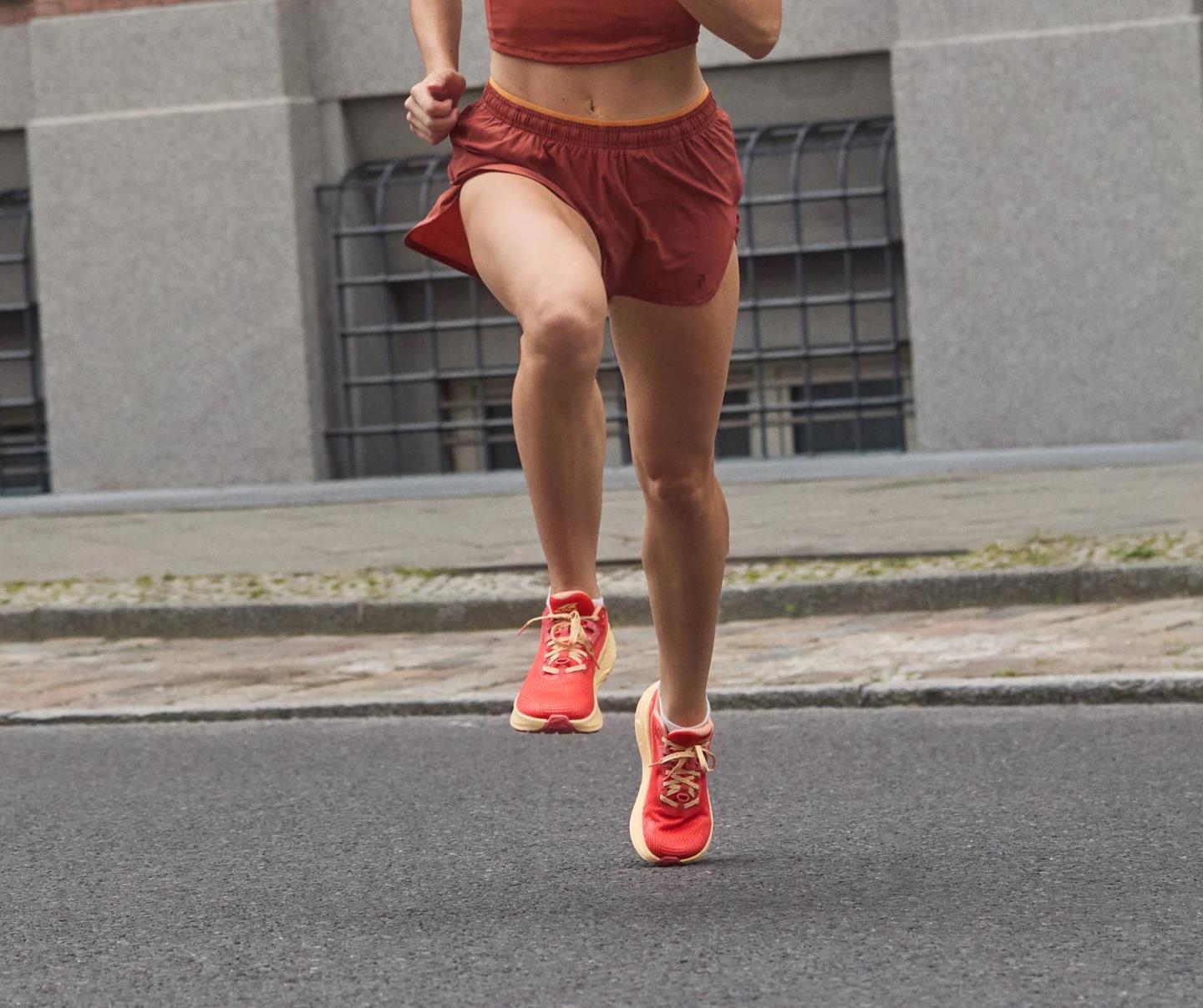Review: Altra Experience Wild Trail Running Shoes – for Trail Lovers and Plantar Fasciitis Relief
 Karen Parnell
February 25, 2025
Karen Parnell
February 25, 2025
Review: Altra Experience Wild Trail Running Shoes – for Trail Lovers and Plantar Fasciitis Relief
Living in the mountains of southern Spain, at 750m above sea level, my days are shaped by rugged trails, steep climbs, and endless views.
As a triathlon coach with a deep love for trail running and hiking, finding the right shoe isn’t just about comfort—it’s about performance, durability, and, recently for me, relief from plantar fasciitis. Enter the Altra Experience Wild.
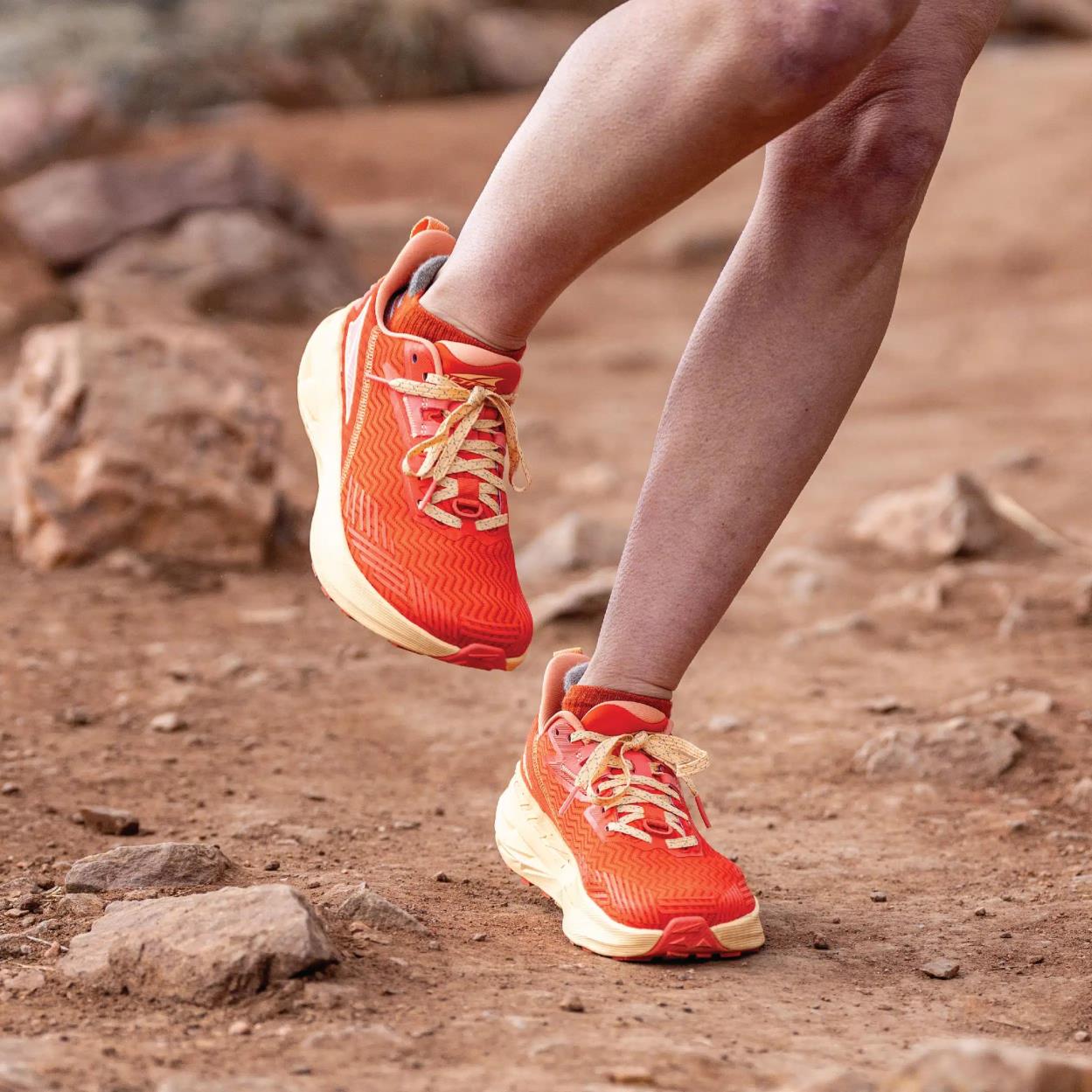
Get your FREE Guide to Running Speed and Technique
Unboxing the Altra Experience Wild Trail Running Shoes
Before we dive in to the review lets take a look at what the Altra Experience Wild looks like straight out of the box in this video.
Altra Experience Wild Trail Running Shoes Unboxing Video
Altra Experience Wild Technical Features
The Altra Experience Wild comes packed with features designed to enhance performance, comfort, and foot health on the trails.
- MAXTRAC™ Outsole: This grippy outsole offers the ideal balance of traction, grip, and durability, making it perfect for tackling a variety of terrains—from rocky mountain paths to loose gravel trails.
- Rocker Shape: Engineered to create a smooth, forward-rolling motion with every step, the rocker shape helps propel you naturally, encouraging an efficient toe-off without disrupting your natural stride. This is a feature not on many wide toe box natural running shoes so felt more like my normal Hoka runners.
- Natural Fit: Designed with Altra’s signature roomy toe box and zero to low drop (4mm in the case of these shoes), this feature allows your feet to move as they were meant to—promoting better alignment, reducing pressure on the plantar fascia, and encouraging natural foot movement.
- EVA Midsole Foam: Lightweight and responsive, this compression-moulded foam delivers a cushioned, effortless feel underfoot. It’s designed to boost running efficiency while providing the comfort needed for longer adventures. This again makes this Altra shoe feel more like a standard running shoe.
- Engineered Mesh Upper: Lightweight and breathable, yet surprisingly durable against trail debris and sharp rocks. Plus, it dries quickly, which is a blessing for those early morning runs in the heat of the day when your foot gets hot and sweaty!
- Heel pads: Inside the heel is some extra padding which I noticed the first time I put them on. This suited me as my heels tend to move up and down a lot and van rub – this extra padding gave extra comfort and kept my heel in place.
- Gaiters: Being trail running shoes they have the fitting to add gaiters to keep sand and debris getting into your shoe. This take the form of a ring on the upper and Velcro flap on the heel.
These technical elements work together to create a shoe that supports natural movement, enhances trail performance, and promotes foot health but also has a rocker shape and midsole foam for comfort —ideal for runners and hikers dealing with plantar fasciitis or simply looking for a more comfortable, efficient ride.
This shoe is an ideal “transition shoe” for runners transitioning to wide toe boxed, natural running shoes with zero drop.
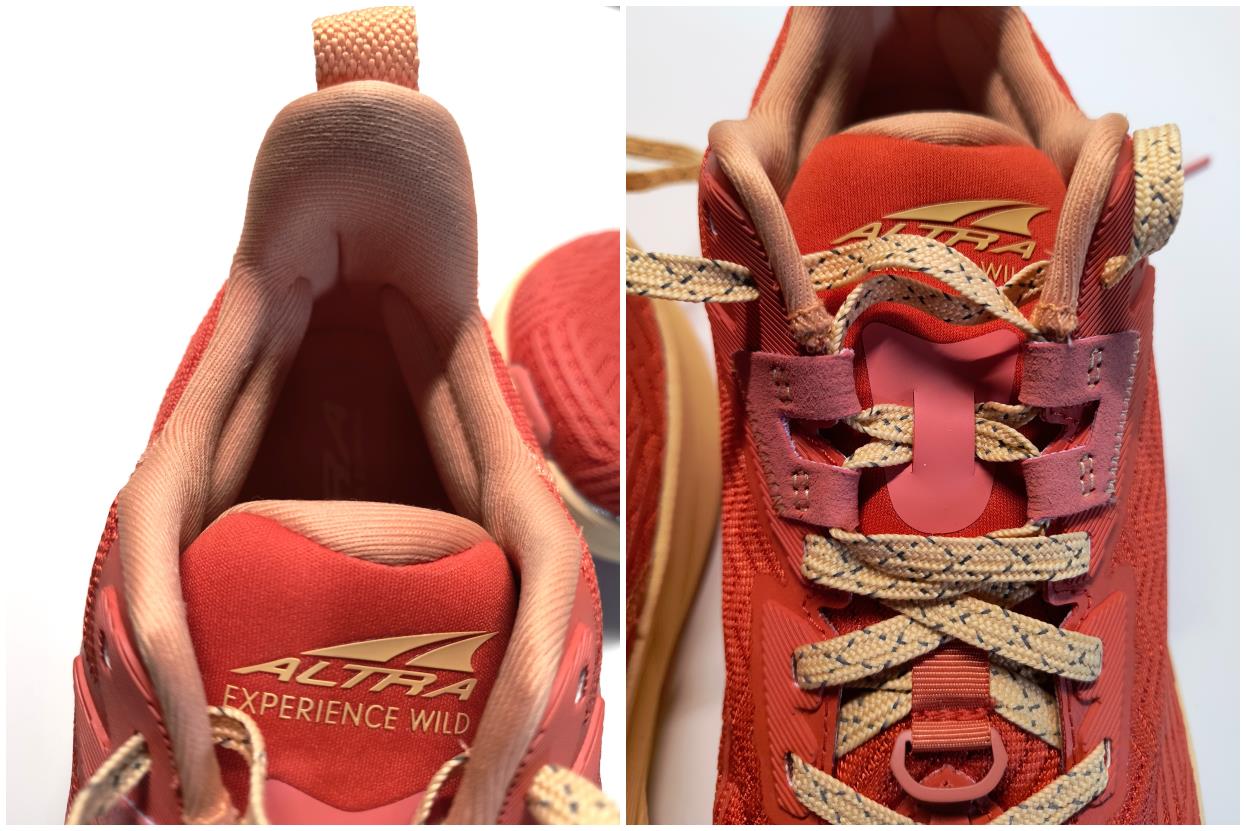 Altra Experience Wild padded heal and tongue
Altra Experience Wild padded heal and tongue
Get your FREE 10k Trail Running Plan
Weight
10 oz. (283 g) for a US M9/EU43/UK8
8.7 oz. (246 g) for a US W7.5/EU38/UK5.5
Stack Height / Drop
32 mm in heel, 28 mm in forefoot (4 mm drop)
Price
£99 on Amazon
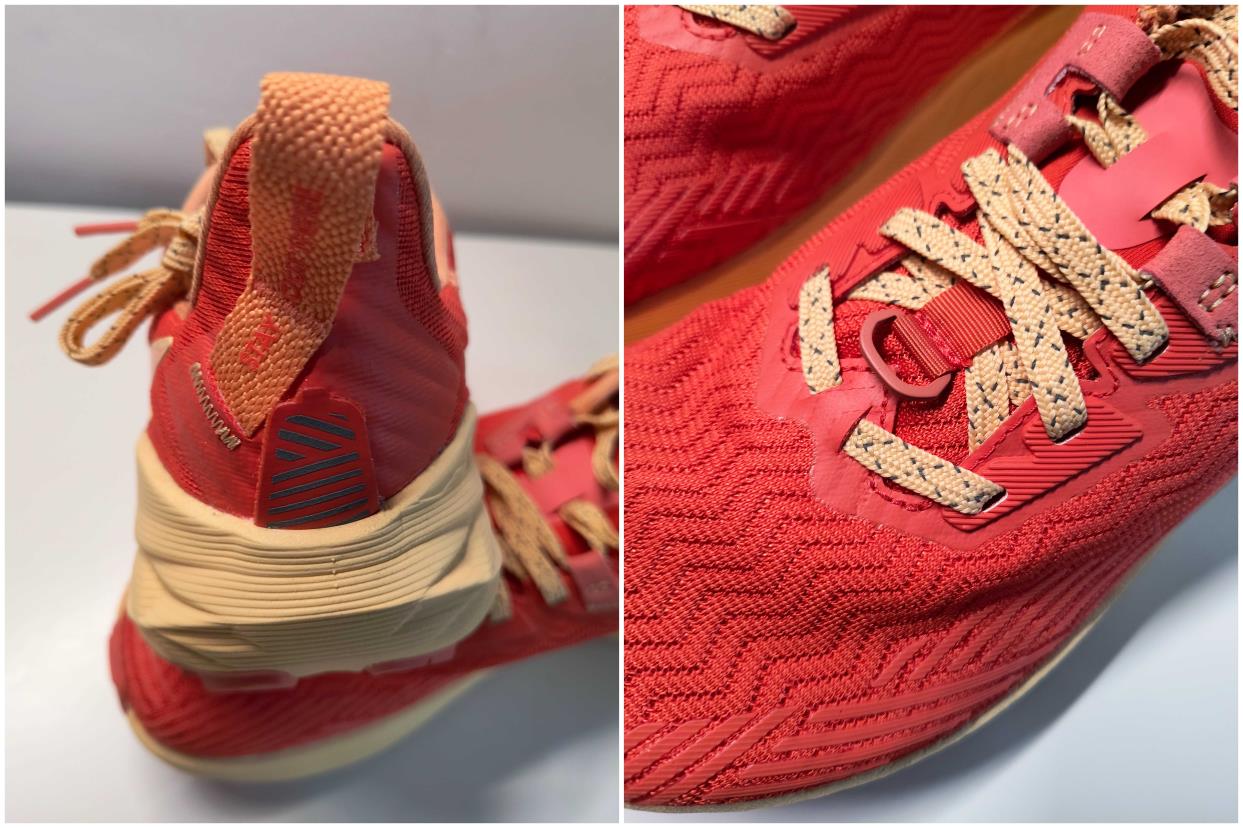 Altra Experience Wild Gaiter attachments on the heal and shoe top
Altra Experience Wild Gaiter attachments on the heal and shoe top
Get your FREE Guide to Running Speed and Technique
Trail Running & Hiking Performance
I’ve taken these shoes on a variety of terrains—from dusty single-track mountain paths to rugged, rocky climbs—and they’ve performed beyond expectations. The grip is great despite hearing some mixed reviews of their proprietary sole, especially on technical descents where footing is critical.
My first impressions where that they were really comfortable like a pair of slippers! The extra heel padding, padded tongue, wide toe box and foam mid-sole helped make them comfortable.
The cushioning strikes a perfect balance: soft enough for comfort during long runs but firm enough to stay agile and responsive.
I read a review of Altra’s saying that the shoe looked like “clown shoes” due to the wide toe box but I was pleasantly surprised when I took them out of the box. They don’t look that different from other running shoes but feel a lot roomier for my toes.
When hiking, the wide toe box truly shines. It gives my feet room to swell naturally during longer treks, and the low drop platform promotes a more mindful walking pattern, encouraging me to engage my foot muscles more naturally.
Altra is known for its zero-drop shoes but the Altra Experience Wild is a departure from this and it features a low drop from heel to toe of 4mm. This was perfect for me as I need to transition slowly to zero drop.
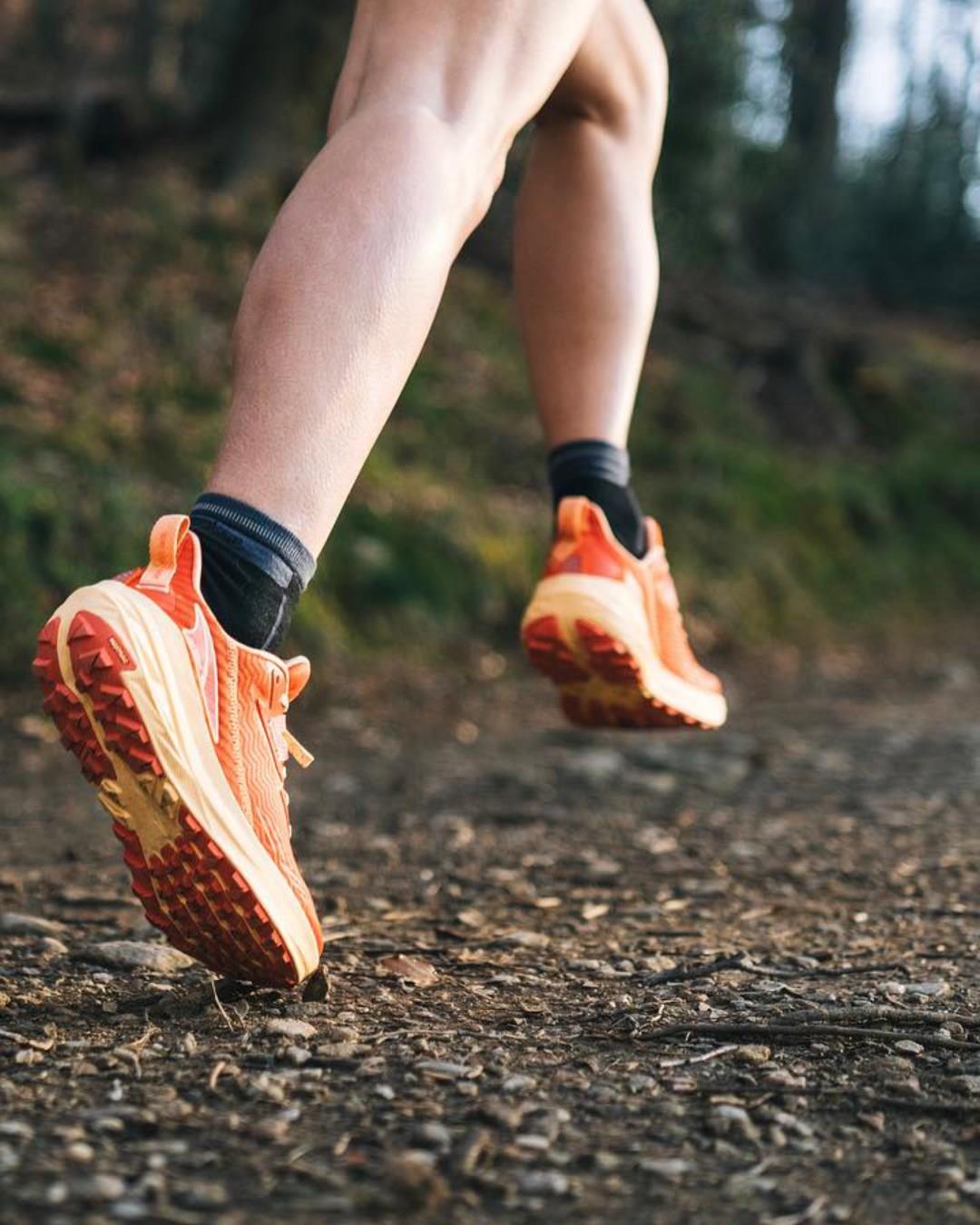 Altra Experience Wild great on the trails
Altra Experience Wild great on the trails
Get your FREE 10k Trail Running Plan
Altra Shoes for Plantar Fasciitis Relief
Plantar fasciitis has been a frustrating hurdle for me, especially since I usually rely on orthotics for relief.
Initially, I was cautious about going without them, but the Altra Experience Wild has been a revelation. The combination of the wide toe box and low-drop platform encourages natural foot mechanics and strengthens intrinsic foot muscles—both essential for long-term plantar fasciitis recovery.
The cushioning supports my heel and arch without being overly restrictive, and I’ve noticed less stiffness in my plantar fascia after runs and hikes. While I’m still cautious on particularly long outings, these shoes have given me the confidence to wean off my orthotics gradually and work toward strengthening my feet naturally.

Altra Expereince Wild with a wide toe box - ideal to help with Plantar Fasciitis pain
Get your FREE Guide to Running Speed and Technique
Final Thoughts about the Altra Experience Wild Trail Running Shoe
The Altra Experience Wild isn’t just another trail shoe—it’s a partner for those looking to run and hike more naturally while supporting foot health.
For anyone struggling with plantar fasciitis or looking to transition away from orthotics, these shoes could be a game-changer.
Pros:
✅ Wide toe box for natural foot positioning
✅ Excellent grip and trail traction
✅ Supportive yet responsive cushioning
✅ Helps encourage foot muscle strengthening
Cons:
❌ Might take time to adjust to low or zero-drop if you’re new to it
❌ Slightly bulky for those who prefer a minimalist feel
❌ Ideally I need a half size as my feet are different sizes but they did not have the 41.5 so I had take the 41 which can slightly too small for my right foot which is a full size bigger than my left foot!
Conclusion: Altra Experience Wild
In the bright, bold orange colour, they’re not just functional—they’re a statement on the trail. Whether you're hitting the mountain trails for a run or embarking on a day-long hike, these shoes offer comfort, performance, and, for me, a real step toward healing.
What makes the Altra Experience Wild stand out is how they combine technical performance with genuine foot support. The wide toe box and low-drop platform encourage natural movement, help strengthen foot muscles, and ease strain on the plantar fascia.
The Altra Experience Wild is a great shoe to help you transition to zero-drop shoes with a wide toe box.
For anyone looking to run or hike more naturally while supporting recovery from foot pain, these shoes offer a perfect balance of comfort, stability, and strength-building—helping you move with confidence, one step at a time.
Karen Parnell is a Level 3 British Triathlon and IRONMAN Certified Coach, 8020 Endurance Certified Coach, WOWSA Level 3 open water swimming coach and NASM Personal Trainer and Sports Technology Writer.
Karen has recently completed a postgraduate MSc in Sports Performance Coaching at the University of Stirling.
Need a training plan? I have plans on TrainingPeaks and FinalSurge:
I also coach a very small number of athletes one to one for all triathlon and multi-sport distances, open water swimming events and running races, email me for details and availability. Karen.parnell@chilitri.com
Get your FREE Guide to Running Speed and Technique
Get your FREE Swim Workouts for Triathletes E-book
Get your FREE Open Water Swimming Sessions E-Book
.jpg)
Get your FREE 10k Trail Running Plan
Tips for Transitioning Into Low or Zero-Drop Shoes (Like Altra’s)
Switching to low or zero-drop shoes can be a game-changer, but it’s important to transition carefully to avoid injury or strain:
- Start Slow
- Begin by wearing your Altra’s for short walks or easy runs (10–20 minutes).
- Gradually increase time by 10–15 minutes every few days.
- Listen to Your Body
- Mild soreness in your calves or feet is normal as your muscles adjust.
- If you feel sharp pain, especially in your plantar fascia or Achilles, take a break and ease back into it.
- Work on Your Running Form
- Focus on landing with a midfoot strike instead of a heel strike.
- Keep your posture upright and try to increase your cadence (170–180 steps per minute).
- Stretch and Strengthen
- Incorporate daily foot and calf stretches (see below for specific exercises).
- Strong calves and flexible ankles will ease the transition and help prevent injury.
- Alternate Shoes
- Use your traditional shoes for longer runs or hikes initially while incorporating short sessions with the Altra’s.
- Over time, aim to wear your Altra’s for all runs and hikes once your body has fully adapted.
Best Exercises for Plantar Fasciitis Relief and Prevention
These exercises focus on stretching the plantar fascia and strengthening the muscles of your feet and lower legs and you can get more details about Plantar Fasciitis relief here.
1. Calf Stretch (Wall Stretch)
- Stand facing a wall, place your hands on it for support.
- Step one foot back, keeping it straight with the heel on the ground.
- Bend your front knee and lean forward until you feel a stretch in the back leg’s calf.
- Hold for 30 seconds, switch sides.
- Repeat 3 times on each leg.
2. Plantar Fascia Stretch
- Sit on a chair and cross one foot over the opposite knee.
- Hold your toes and gently pull them back toward your shin until you feel a stretch along your arch.
- Hold for 30 seconds.
- Repeat 3 times per foot.
3. Toe Towel Curls
- Place a towel on the floor in front of you.
- Using only your toes, scrunch the towel toward you.
- Once the towel is gathered, reverse the motion and push it away.
- Do 3 sets of 10 reps per foot.
4. Foot Rolling (Massage)
- Roll your foot over a small ball (like a tennis or lacrosse ball) or a frozen water bottle.
- Apply moderate pressure and roll from your heel to your toes.
- Roll for 2–3 minutes per foot, especially after running.
5. Single-Leg Balance
- Stand on one foot for 30 seconds.
- To increase difficulty, close your eyes or stand on an unstable surface (like a cushion).
- Do 3 sets on each foot to improve foot strength and stability.
6. Eccentric Calf Raises
- Stand on the edge of a step with your heels hanging off.
- Rise up on both feet, then slowly lower down on one foot.
- Do 3 sets of 10 reps per leg.
Bonus Tips for Managing Plantar Fasciitis During Transition
- Massage regularly: Use your hands, a massage ball or fascial relief tool on the arch of your foot.
- Apply ice: Roll your foot over a frozen water bottle after long runs.
- Wear supportive shoes indoors: Don’t go barefoot on hard floors during recovery.
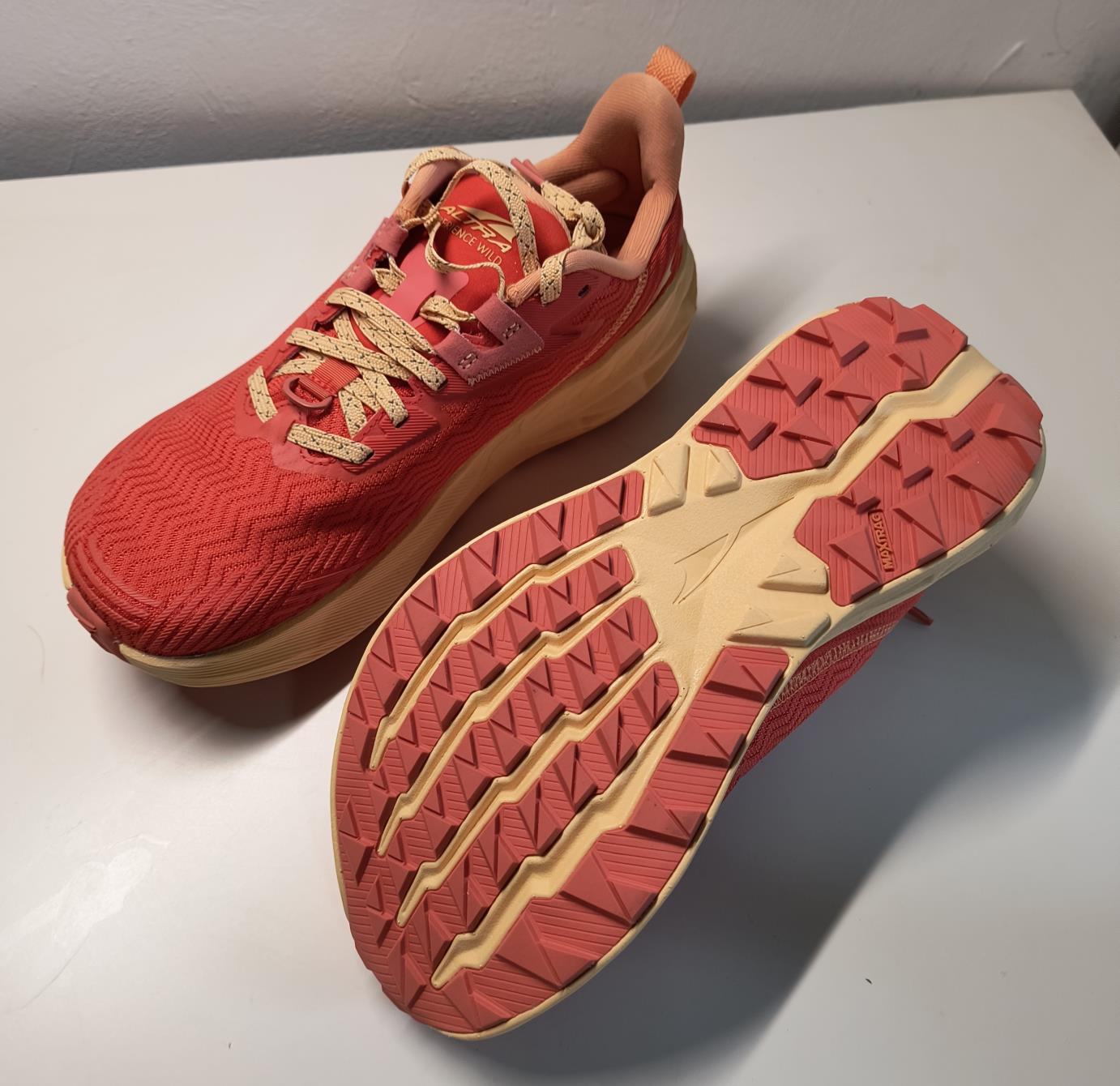
Get your FREE Guide to Running Speed and Technique
FAQ: Altra Shoes, Wide Toe Box, and Zero Drop Benefits for Plantar Fasciitis
1. What makes Altra shoes different from other running and hiking shoes?
Altra shoes are designed with a focus on natural movement and foot health. Two standout features set them apart:
- FootShape™ Toe Box: Allows your toes to spread naturally, improving stability and comfort.
- Balanced Cushioning™ (Zero Drop): The heel and forefoot sit at the same height, promoting a more natural running and walking form that encourages proper alignment and posture.
These features are particularly beneficial for those looking to improve foot strength, prevent injury, and promote a more balanced stride.
2. How does a wide toe box help with plantar fasciitis?
A wide toe box allows your toes to splay naturally, which can help:
- Reduce pressure on the plantar fascia by allowing your foot to move more freely.
- Improve stability by engaging the foot muscles properly, especially on uneven terrain.
- Promote natural alignment by preventing your toes from being cramped, which can contribute to poor walking or running mechanics that strain the plantar fascia.
By giving your foot the space it needs, you’re helping alleviate the stress that contributes to plantar fasciitis pain.
3. What is zero drop, and why is it good for plantar fasciitis?
Zero drop means that the heel and forefoot of the shoe are at the same height from the ground, mimicking a barefoot stance. This encourages:
- Natural foot positioning and a more balanced gait.
- Better posture by aligning the body from the ground up.
- Engagement of foot muscles that can help strengthen the arch and reduce strain on the plantar fascia over time.
For those with plantar fasciitis, zero-drop shoes can help retrain foot mechanics and strengthen weak areas contributing to the condition.
4. Can I wear Altra shoes without orthotics if I have plantar fasciitis?
Yes, many people find they can gradually reduce their reliance on orthotics when using Altra shoes due to the natural foot mechanics encouraged by the wide toe box and zero-drop platform. However, it’s important to:
- Transition gradually to allow your foot muscles to strengthen.
- Start with shorter walks or runs before increasing distance or intensity.
- Consult a healthcare professional if you’re unsure about ditching your orthotics entirely.
5. Are Altra shoes good for hiking and trail running?
Absolutely! Altra shoes, especially models like the Experience Wild, are built for rugged terrain. They offer:
- Superior grip with aggressive outsoles for technical trails.
- Comfortable cushioning for long distances.
- Durable uppers that withstand trail debris and rough conditions.
The natural foot shape and supportive design make them ideal for both trail running and hiking, while also supporting foot health.
6. How long does it take to adjust to zero-drop shoes?
Transitioning to zero-drop shoes can take time, especially if you’re used to traditional running shoes with a raised heel. A typical adjustment period can range from a few weeks to a couple of months. Tips for transitioning include:
- Start slowly with short runs or walks.
- Focus on form, landing with a midfoot strike instead of heel striking.
- Incorporate foot strengthening exercises to build support muscles.
7. Can Altra shoes help prevent plantar fasciitis from returning?
While no shoe can guarantee prevention, Altra’s focus on natural movement, proper alignment, and strengthening your foot muscles can significantly reduce the risk of plantar fasciitis recurring. By encouraging proper biomechanics and allowing your foot to function more naturally, they help build resilience over time.
